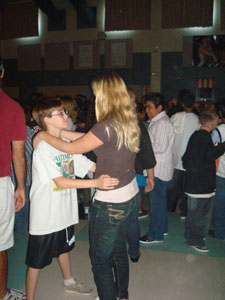 |
| Total Wine Sales Continue to Move Higher |
About six weeks ago I was asked to speak about the economy, the environment for the US wine consumer, and the fine wine business. The meeting was part of a management retreat for a large wine company and included an acquaintance of mine who we will call "Deep Gullet." It included many of the distributor partners of the company as well so there was quite a wide perspective on the business. This wasn't a client of mine and never will be, but I took the invitation because I thought I might learn something from Deep Gullet and the other presenters. I did and came away with two important perspectives:
- The small 2011 vintage was really difficult for fine wine distributors. Allocations were more the norm for their retail accounts because there just wasn't enough wine produced.
- Attempting to increase bottle pricing - even in an allocated environment has been like pushing a wet string up the hill.
In the 2013 Annual State of the Wine Industry Report released in January of this year, I predicted that we were going to see a soft first half of the year economically, but an improved second half. You can read the report if you want to check my thinking. We predicted a 4th consecutive year of lower sales growth in fine wine; something between 4%-8%. It's still growth but growth has been slowing for some time.
At this stage, we appear to be tracking well to the overall growth estimate but will have to wait to see sales results for Oct-Dec to see if we were correct in our annual prediction. After exchanging some G2 with Deep Gullet we discovered we were of the same belief: What is clear at this point is while wine consumption continues to increase in volume as seen in the lead chart, GDP is stalling and the middle class aren't able to fully participate. Yes .... Americans like wine and are drinking more in volume, but they aren't paying more in price to support winery production cost increases. The following chart is really descriptive of that point.
 |
| Source: Nielsen Beverage Group |
My friend Danny Brager from Nielsen presented the chart to the right recently at a conference in which he was speaking. While all F&B categories are up 1.7% in price on average, wine is only up 0.20%. Consumers aren't accepting price increases for wine or spirits for that matter. The economy isn't supporting price growth and inflation seems to be well in check. I'll spare you the in-depth analysis of what's happening in the country that's holding back economic growth but here are some high-level bullets:
- Housing has indeed recovered most of its value now which is a huge help to the middle class... should lead to a bit of a wealth effect and release pent up demand in sectors, and allow more movement between jobs in different regions. That should have helped support a better second half of the year as I'd thought, but now I have my doubts because of higher interest rates and Sequestration 2.
- Youth unemployment rates are still very high in the main industrial countries of the world (Yes Virginia, the Millennials aren't reading the press about how they are driving growth in wine sales. They are a big cohort but have no income.)
- Boomers are hitting retirement age. They drove the growth in wine since the middle 90's so that is a big accelerating headwind in the face of fine wine purchasing.
- The wealth gap is widening. The wealthiest Americans have recovered their pre-crash wealth and are spending. The middle class while improving off the bottom, need real work to spend and while the unemployment rate continues to decline, the US labor force is shrinking. There are fewer people working than before even if the unemployment rate is falling.
- The Fed announced last week they were postponing tapering. While the markets loved it, the reality is we are careening to another 'fiscal cliff' on funding and proving the S&P upgrade of the US credit rating earlier in the year might have been premature. What the announcement means is the economy isn't doing as well as the Fed would like and they are going to keep throwing economic crack at the market until they are a little more certain there is a recovery. In the meantime however, the long bond in the US has gone up dramatically since May and that means the middle class is less able to afford the houses to which they were aspiring. We see that in the sharp decline in new mortgages application rates.
Now move to grape and wine prices over the past 2 years. With most predicting a grape shortage by April/May of 2012, growers began to recover pricing that had been depressed since the recession started. Then we had the 4MM ton harvest of 2012 and the shortage - to the extent there was one, went away. Since non-bearing acres are so low and planting stagnated in the last decade - not even keeping up with vine replacement, most wineries looked through the heavy 2102 crop and still were willing to pay higher prices this year. With the the 2013 harvest now well under way, tanks are full and there is still a lot of bulk wine for sale. It looks like the harvest is coming in large once again.
 |
| Prices Have been Dropping as Volume of Bulk Increased |
So where does that leave us with grape prices? Add it up:
- Current 2012 Bulk Prices are flat to trending down
- The economy is not seeing the growth I'd hoped for in the back half of the year.
- Consumers haven't been willing to pay more for wine and based on the recovery sluggishness, I can't see them willing to pay more going into the holidays or even 2014 at this point.
- Producers have been paying more for grapes and getting their margins squeezed because the costs can't be passed on.
- Supply isn't short for wine right now, and it looks like we'll have two back to back large harvests.
That leaves me and Deep Gullet to believe we won't see new grape contract price increases in 2014. Taking all the factors that impact price into consideration, the only question at this point is longer term supply. Are there enough acres planted? Should grape buyers look through the the large 2013 harvest again and view 2014 as likely short? If some of the higher tonnage of the past 2 years is a result of changed farming practices - and there is that possibility - we may not be as short, even in the long term as many have predicted. In the meanwhile while we ponder the balance of grape supply and demand, there are plantings taking place.
My conclusion is all things held equal, at the end of the 2013 harvest we should see downward pressure on grape pricing.
My conclusion is all things held equal, at the end of the 2013 harvest we should see downward pressure on grape pricing.















/sm-wine-report-2013-infographic.jpg)






